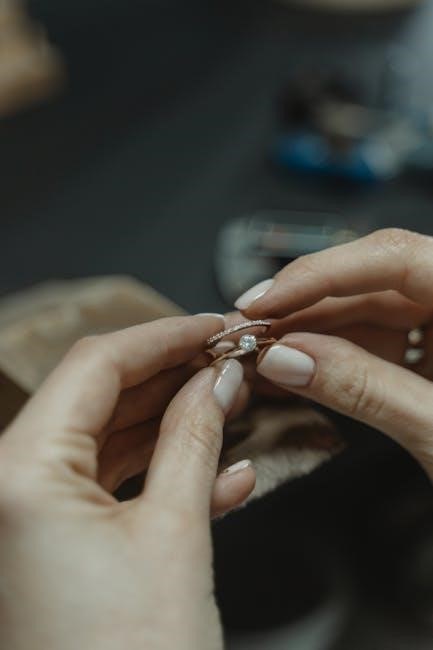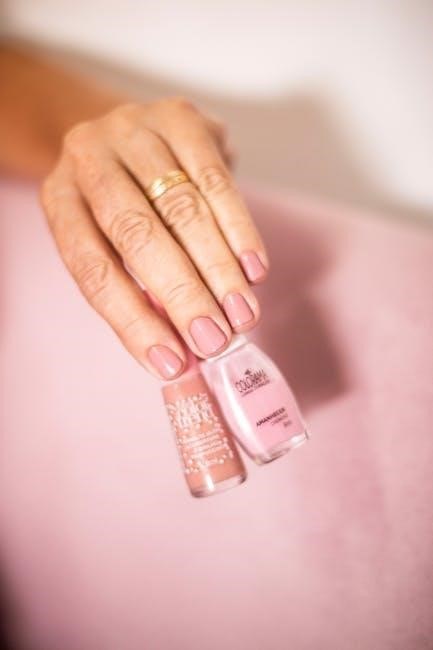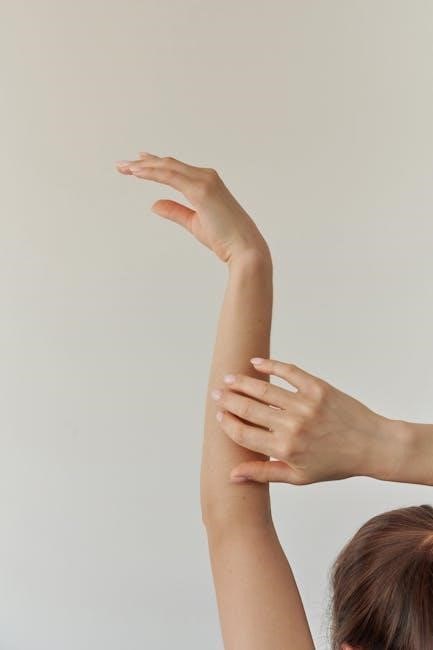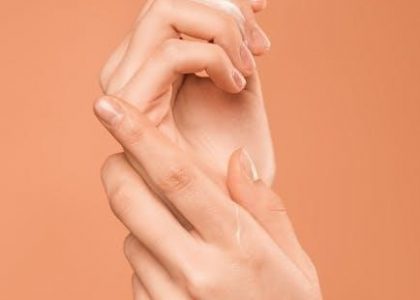Nail biting, or onychophagia, is a common habit where individuals bite their nails due to stress, boredom, or habit. While often seen as harmless, it can lead to health issues like dental problems or infections. Understanding the causes and consequences is key to addressing this behavior effectively.
1.1 Understanding Nail Biting (Onychophagia)
Nail biting, medically known as onychophagia, is a common habit where individuals repeatedly bite or chew their nails. It often occurs subconsciously, especially during periods of stress, boredom, or concentration. While it can be a harmless habit for some, others may experience emotional distress or social embarrassment due to it. Onychophagia is classified as a body-focused repetitive behavior, with some considering it a compulsive disorder. Understanding its psychological and physical aspects is crucial for addressing the habit effectively and finding appropriate solutions.
1.2 Why People Bite Their Nails
Nail biting often stems from emotional states like stress, anxiety, or boredom. It can also be a deeply ingrained habit, developed over time. Some individuals bite their nails when concentrating or working on challenging tasks, as it provides a subtle form of stimulation. For others, nail biting may serve as a coping mechanism for underlying psychological issues. Regardless of the reason, identifying personal triggers is essential for breaking the cycle and adopting healthier alternatives to manage these emotions effectively.
Causes of Nail Biting
Nail biting is often triggered by stress, anxiety, or boredom. It can also develop as a habit or due to psychological factors, making it a complex behavior to address.
2.1 Stress and Anxiety
Stress and anxiety are primary triggers for nail biting. During tense moments, individuals often bite their nails as a coping mechanism to relieve emotional discomfort. This behavior can become automatic, providing temporary relaxation. However, it may also indicate underlying mental health issues. Chronic stress can exacerbate the habit, making it harder to break. Addressing stress through mindfulness or therapy can help reduce nail biting episodes. Understanding this link is crucial for effective intervention.
2.2 Boredom and Habit
Boredom and habit are significant contributors to nail biting. When idle, individuals often bite their nails unconsciously, making it a deeply ingrained behavior. Over time, this action becomes automatic, triggered by mundane tasks or waiting. Breaking the habit requires awareness and intentional replacement with healthier alternatives. Strategies like keeping nails trimmed or using bitter-tasting polishes can help deter biting. Recognizing these triggers is essential for developing effective solutions to overcome the habit.
2.3 Psychological Factors
Nail biting is often linked to psychological factors, including stress, emotional distress, and underlying mental health conditions. It can serve as a coping mechanism for anxiety or depression, providing temporary relief. In some cases, it may be associated with compulsive disorders, where the behavior becomes repetitive and difficult to control. Recognizing these psychological triggers is crucial for addressing the root causes of nail biting and developing effective strategies to overcome it.

Consequences of Nail Biting
Nail biting can lead to dental issues, skin infections, and social embarrassment. It may also cause long-term damage to nails and overall health.
3.1 Dental Problems
Nail biting can lead to various dental issues, including misaligned teeth and worn-down enamel. The constant pressure from biting can cause teeth to shift or become uneven. Additionally, the habit may result in chipped or cracked teeth, especially if nails are sharp or hard. Over time, this can lead to gum damage and increased sensitivity. Frequent biting also puts extra strain on the jaw, potentially leading to TMJ disorders. Addressing nail biting early is crucial to prevent long-term dental complications.
3.2 Skin Infections
Nail biting can lead to skin infections, as bacteria under the nails thrive in warm, moist environments. Germs can enter through small cuts or torn skin, causing infections like paronychia. This condition inflames the skin around the nail, leading to redness, swelling, and pain. If left untreated, infections can spread or become chronic. Proper hygiene and avoiding nail biting are crucial to prevent such issues and promote healing. Regularly cleaning and drying hands can also reduce the risk of bacterial growth.
3.4 Social Embarrassment
Nail biting can lead to social embarrassment due to unsightly, damaged nails. People may feel self-conscious, avoiding gestures that reveal their hands. This habit can hinder social interactions and professional opportunities, as others may perceive it as a sign of nervousness or poor grooming. The visible damage to nails can make individuals feel uncomfortable in public settings, affecting their self-esteem and confidence; Addressing nail biting can help improve social interactions and reduce feelings of embarrassment, fostering a more positive self-image.

Preventing Nail Biting
Preventing nail biting involves practical strategies like keeping nails short, using bitter-tasting polishes, and replacing the habit with healthier alternatives. Consistency is key to breaking the cycle.
4.1 Keeping Nails Short
Keeping nails short is a simple yet effective way to prevent nail biting. Trimming your nails regularly ensures there’s little to no nail to bite, making the habit less satisfying. Use nail clippers to maintain short, even lengths, and consider touching up your nails weekly to prevent growth. Short nails are also less tempting during stressful or bored moments, helping to break the cycle. This method is particularly effective when combined with other strategies, like applying bitter-tasting polishes or keeping hands busy with alternative activities. Regular trims can also improve the appearance of your nails, motivating you to maintain their health and resist the urge to bite. By keeping your nails short, you create a physical barrier against the habit, making it easier to stop nail biting for good.
4.2 Using Bitter-Tasting Nail Polish
Applying bitter-tasting nail polish is a popular method to deter nail biting. Products like Mavala Stop or similar formulas leave an unpleasant taste, discouraging the habit. The bitter flavor acts as a immediate reminder to stop biting. Reapply the polish regularly, especially after washing hands, to maintain its effectiveness. This approach works best for those with mild to moderate nail biting habits. It’s a gentle yet effective way to train yourself to stop without causing harm or discomfort, making it a great first step in breaking the cycle.
4.3 Replacing the Habit with Other Activities
Replacing nail biting with other activities can help break the habit. Engage in hobbies like doodling, knitting, or chewing gum to keep hands busy. Carrying a stress ball or fidget tool can also redirect the urge. Mindful practices, such as deep breathing or meditation, reduce stress triggers. Identifying triggers and substituting with healthier alternatives helps long-term success. This method works by diverting focus away from nails, making it easier to stop biting over time with consistent effort and awareness.

Mental Health and Nail Biting
Nail biting often links to mental health issues like anxiety and depression. It can serve as a coping mechanism for emotional distress, highlighting deeper psychological challenges that need attention.
5.1 Link to Depression and Anxiety
Nail biting is often associated with mental health challenges, particularly depression and anxiety. Individuals may bite their nails as a coping mechanism for emotional distress. Research indicates that chronic nail biting can stem from underlying psychological issues, where the act serves as a temporary relief from anxiety or depressive thoughts. This habit can exacerbate mental health struggles, highlighting the need to address both the behavior and its emotional roots for effective resolution.
5.2 Nail Biting as a Compulsive Disorder
Nail biting can be classified as a compulsive disorder, characterized by repetitive and irresistible urges to bite nails despite negative consequences. According to the DSM-5, it aligns with body-focused repetitive behaviors, similar to hair pulling. This disorder often stems from underlying emotional distress, with nail biting providing temporary relief. If left unaddressed, it can escalate, causing significant distress and impairment in daily life, emphasizing the need for targeted interventions to manage the behavior effectively;

Solutions for Adults
6.3 Using Nail Files and Clippers
Carrying nail files and clippers allows immediate addressing of hangnails or imperfections, reducing the urge to bite. Smooth, well-maintained nails discourage biting, promoting healthier habits and aesthetics.
6.1 Mindfulness and Awareness
Practicing mindfulness helps adults become more aware of their nail-biting habits. By paying attention to triggers, such as stress or boredom, individuals can consciously resist the urge to bite. Techniques like deep breathing or recognizing patterns can interrupt the automatic behavior. Mindfulness also encourages self-compassion, reducing the emotional stress that may contribute to nail biting. Over time, this awareness fosters healthier habits and reduces the frequency of nail biting, leading to improved mental and physical well-being.
6.2 Regular Manicures
Regular manicures can help prevent nail biting by keeping nails clean, trimmed, and moisturized. Smooth, polished nails reduce the urge to bite, as they feel less tempting. Additionally, the process of scheduling and maintaining manicures creates accountability, encouraging individuals to avoid damaging their nails. This practice also fosters a sense of pride in one’s appearance, further discouraging nail biting and promoting healthier habits overall.
Using nail files and clippers is a practical way to manage nail biting. By keeping nails trimmed and smooth, you reduce the temptation to bite. Carry these tools to address any rough edges or hangnails immediately, preventing the urge to use your teeth. Regular filing also helps maintain neat nails, making biting less satisfying. This proactive approach not only stops nail biting but also promotes healthier, well-groomed nails over time.

Helping Children Stop Nail Biting
Helping children stop nail biting involves keeping their nails short, setting a good example, and using positive reinforcement. Addressing root causes and providing alternatives can curb the habit effectively;
7.1 Keeping Their Nails Trimmed
Keeping children’s nails trimmed is a simple yet effective strategy to reduce nail biting. Short nails are less tempting to bite, making it easier for kids to resist the habit. Regular trims can also help prevent the discomfort caused by overgrown nails, which might otherwise lead to biting. Parents should maintain a routine of trimming their child’s nails weekly to ensure they stay short and neat, discouraging nail biting altogether.
7.2 Setting a Good Example
Children often mimic the behaviors of adults, making it crucial for parents to set a good example. If you struggle with nail biting, addressing your own habit can positively influence your child. By stopping nail biting yourself, you demonstrate commitment and show your child that overcoming the habit is achievable. This creates a supportive environment where your child feels encouraged to follow your lead and adopt healthier habits. Leading by example fosters trust and motivation, helping your child understand the importance of breaking the nail-biting cycle.
7.3 Reward Systems
Implementing a reward system can motivate children to stop nail biting. Offer small incentives like stickers or stars on a chart for each day they resist biting. Over time, exchange these rewards for bigger prizes, fostering a sense of achievement. Tracking progress visually helps children stay motivated. Positive reinforcement encourages healthy habits and builds confidence. Consistent rewards systems teach children the value of perseverance and self-control, making it easier for them to overcome nail biting. This method fosters patience and celebrates small victories.

Advanced Techniques to Stop Nail Biting
Explore advanced methods to overcome nail biting, including habit replacement therapy, tracking progress, and seeking professional help for lasting results. These techniques provide a structured approach to breaking the habit.
8.1 Habit Replacement Therapy
Habit replacement therapy involves substituting nail biting with a healthier alternative, such as gently touching the skin or using a stress ball. This method helps identify triggers and redirect the urge to bite. For example, when the urge arises, individuals can engage in a different activity like doodling or chewing gum. Over time, this practice reduces the frequency of nail biting. It’s a low-effort technique that can be combined with mindfulness to enhance effectiveness and promote lasting change.
8.2 Tracking Progress
Tracking progress is essential to overcoming nail biting. Keep a journal or use a mobile app to record instances of nail biting. Each time you catch yourself biting, mark it down; Over time, this visual record helps identify triggers and patterns. Celebrate small victories, like reducing the number of instances weekly. This method enhances awareness and motivation, making it easier to break the habit. Regular tracking also fosters accountability and encourages consistent effort toward change.
8.3 Professional Help
Seeking professional help can be crucial for severe nail biting cases. Therapists may use techniques like cognitive-behavioral therapy (CBT) or habit reversal training to address underlying triggers. Dermatologists can offer solutions for damaged nails, while psychologists can help manage stress or anxiety linked to the habit. Professional guidance provides personalized strategies and support, making it easier to stop nail biting permanently. Experts can also recommend products or tools to aid in the process, ensuring a comprehensive approach to overcoming the habit.





